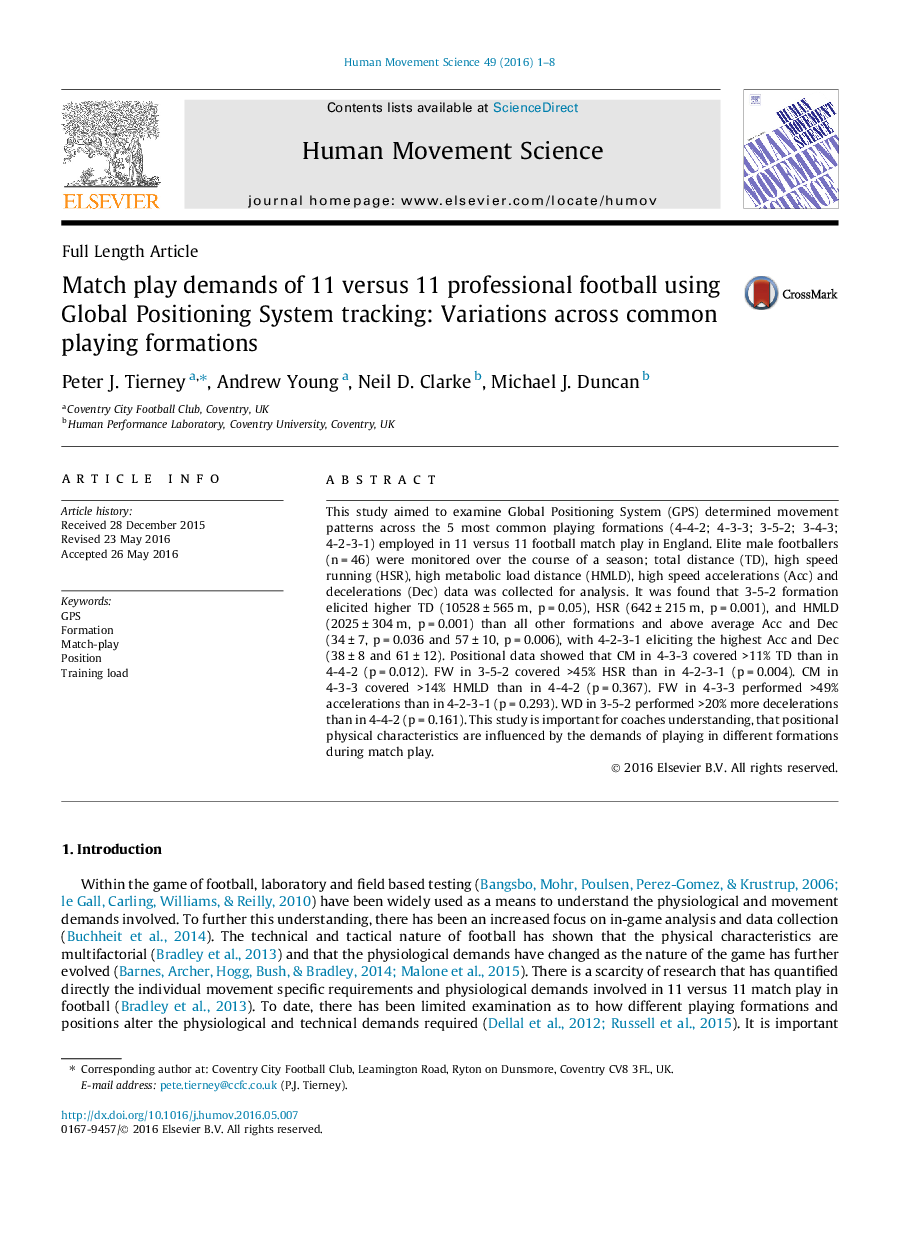| Article ID | Journal | Published Year | Pages | File Type |
|---|---|---|---|---|
| 7291104 | Human Movement Science | 2016 | 8 Pages |
Abstract
This study aimed to examine Global Positioning System (GPS) determined movement patterns across the 5 most common playing formations (4-4-2; 4-3-3; 3-5-2; 3-4-3; 4-2-3-1) employed in 11 versus 11 football match play in England. Elite male footballers (n = 46) were monitored over the course of a season; total distance (TD), high speed running (HSR), high metabolic load distance (HMLD), high speed accelerations (Acc) and decelerations (Dec) data was collected for analysis. It was found that 3-5-2 formation elicited higher TD (10528 ± 565 m, p = 0.05), HSR (642 ± 215 m, p = 0.001), and HMLD (2025 ± 304 m, p = 0.001) than all other formations and above average Acc and Dec (34 ± 7, p = 0.036 and 57 ± 10, p = 0.006), with 4-2-3-1 eliciting the highest Acc and Dec (38 ± 8 and 61 ± 12). Positional data showed that CM in 4-3-3 covered >11% TD than in 4-4-2 (p = 0.012). FW in 3-5-2 covered >45% HSR than in 4-2-3-1 (p = 0.004). CM in 4-3-3 covered >14% HMLD than in 4-4-2 (p = 0.367). FW in 4-3-3 performed >49% accelerations than in 4-2-3-1 (p = 0.293). WD in 3-5-2 performed >20% more decelerations than in 4-4-2 (p = 0.161). This study is important for coaches understanding, that positional physical characteristics are influenced by the demands of playing in different formations during match play.
Keywords
Related Topics
Life Sciences
Neuroscience
Cognitive Neuroscience
Authors
Peter J. Tierney, Andrew Young, Neil D. Clarke, Michael J. Duncan,
